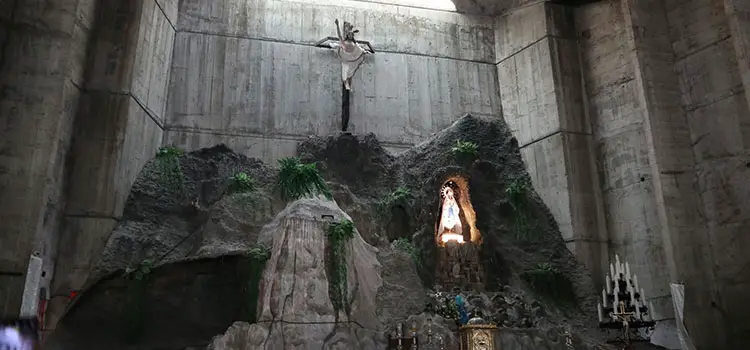
As my daughter’s educational field trip started, we first visited a church. Yes. We went to a church which I thought was a very unusual itinerary for a school field trip. School field trips usually go to some exciting and fun places, museums and historical places. However, when we arrived at our first destination I was amazed by its architectural structure and its history.
As we entered the vicinity, we saw different religious symbols and relics. My daughter and I spent a moment and prayed like most of the other people. Let me tell you about our first stop.
Do you know about the Archdiocesan Shrine of Our Lady of Lourdes? It is also known as the Sunken Shrine, in Bacolor, Pampanga, Philippines, and stands as a poignant symbol of faith and resilience. Partially submerged in the aftermath of the cataclysmic eruption of Mount Pinatubo in 1991, the Sunken Shrine has become a pilgrimage site and a testament to the enduring spirit of the local community.
The Eruption and Submersion
On June 15, 1991, Mount Pinatubo unleashed its fury in one of the most powerful volcanic eruptions of the 20th century. The eruption spewed volcanic ash, rocks, and gases into the atmosphere, resulting in a devastating impact on the surrounding areas. In Bacolor, the lahars (mudflows) generated by the eruption buried the entire town, including the Archdiocesan Shrine of Our Lady of Lourdes, under a thick layer of volcanic debris.
The Church’s Origins
The Archdiocesan Shrine of Our Lady of Lourdes was originally built in the 1920s and served as a center of religious devotion for the local community. The shrine was dedicated to Our Lady of Lourdes, commemorating the reported apparitions of the Virgin Mary to Bernadette Soubirous in Lourdes, France, in 1858.
Salvaging the Shrine
Despite the destruction caused by the eruption, efforts were made to salvage the shrine and its precious religious artifacts. The statue of Our Lady of Lourdes was rescued from the submerged church, representing a beacon of hope and preservation amidst the chaos. While the church could not be fully restored, partial excavation allowed for access to the shrine, creating a unique and poignant setting that became known as the Sunken Shrine.
The Sunken Shrine Today
The Archdiocesan Shrine of Our Lady of Lourdes, or the Sunken Shrine, remains partially submerged, with the water level fluctuating throughout the year. Despite the challenges faced by the local community, the shrine has become a place of pilgrimage and devotion for Filipino Catholics. Visitors can enter the partially submerged church, offering prayers and reflecting on the enduring faith and resilience of the people of Bacolor.
Feast of Our Lady of Lourdes
The Feast of Our Lady of Lourdes, celebrated on February 11th each year, holds particular significance at the Sunken Shrine. The faithful gather for Masses, processions, and other religious events to honor the Blessed Virgin Mary. It is a time when the Sunken Shrine comes alive with fervent devotion, bringing together people from far and wide.
Symbolism and Resilience
The Sunken Shrine serves as a poignant symbol of the resilience and unwavering faith of the people of Bacolor. Despite the destruction caused by the eruption of Mount Pinatubo, the community has embraced the Sunken Shrine as a testament to their ability to overcome adversity. It stands as a reminder that faith can endure even in the most challenging of circumstances.
Conclusion
The Archdiocesan Shrine of Our Lady of Lourdes, the Sunken Shrine, in Bacolor, Pampanga, Philippines, is a remarkable testament to faith and resilience. Partially submerged as a result of the devastating eruption of Mount Pinatubo, the shrine stands as a symbol of hope and endurance.
The Sunken Shrine continues to inspire pilgrims and visitors, reminding them of the strength that can be found in unwavering faith and the ability to rise above adversity. It serves as a powerful reminder that even in the face of immense challenges, the human spirit can persevere, and faith can provide solace and healing. The Sunken Shrine stands as a beacon of hope, inviting all who visit to reflect on the power of resilience and the enduring nature of faith.

Leave a Reply